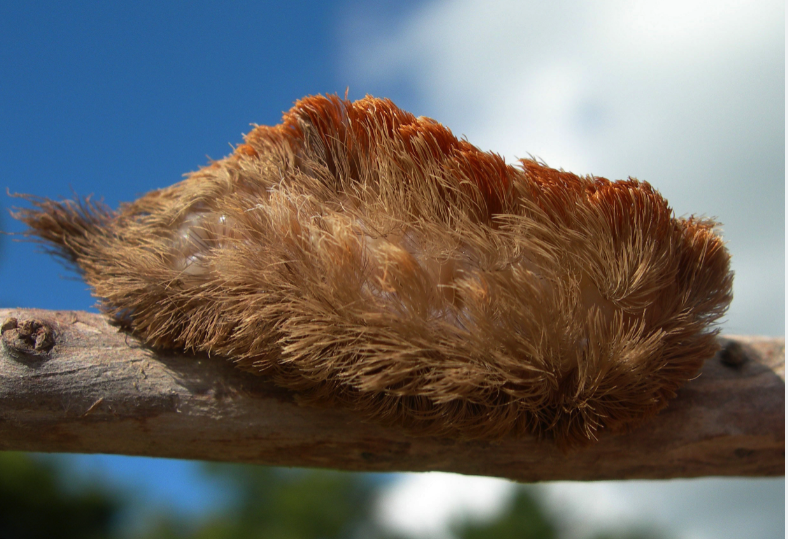A typical family outing turned into a valuable lesson for mother Leslie Howe in 2014. While spending time with her children at a small park in Gwinnett County, Georgia, she noticed a peculiar, ball-shaped fuzzy creature.
Her instincts told her to steer clear of it, and rightfully so. The harmless-looking “fur ball” was actually a Megalopyge Opercularis larva, also known as the puss caterpillar.

This caterpillar’s innocent appearance belies its venomous nature. Its velvety fur hides poisonous bristles that can inject venom into unsuspecting victims. The puss caterpillar is found throughout most of the US, typically growing up to an inch in length.
Experts warn that the caterpillar’s sting is extremely painful. Ethnologist Don Hall describes it as “worse than a wasp sting,” with immediate pain that worsens over time. The venom can cause bone pain, and the discomfort can last up to 12 hours.

Eric Day, manager of Virginia Tech’s Insect ID Lab, can attest to the caterpillar’s potency. After being stung while mowing his lawn, he experienced a burning sensation that subsided within a day, but left a blister that took weeks to heal.
If stung by the puss caterpillar, it’s essential to carefully remove the venomous hairs with tape and wash the area with soap and water. Baking powder or hydrocortisone ointment can alleviate itching, but severe reactions may require medical attention.
Although rare, the puss caterpillar’s sting can cause life-threatening anaphylaxis. Leslie Howe’s cautionary tale serves as a reminder to exercise vigilance when outdoors, especially around unfamiliar creatures.
By sharing her experience, Leslie hopes to warn others about the dangers of the puss caterpillar. This unusual and mysterious creature may look harmless, but its venom packs a painful punch.
Stay informed, stay safe, and spread the word about the hidden dangers lurking in our natural surroundings.


